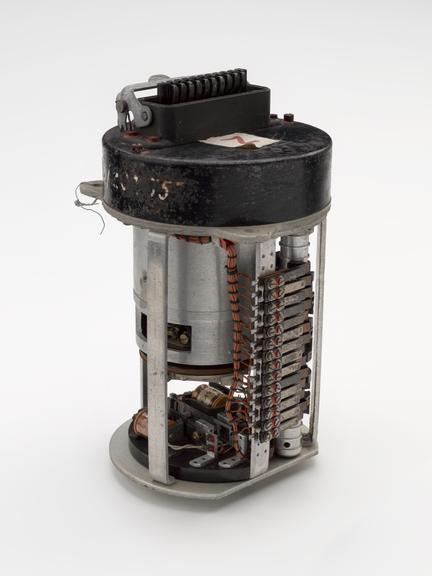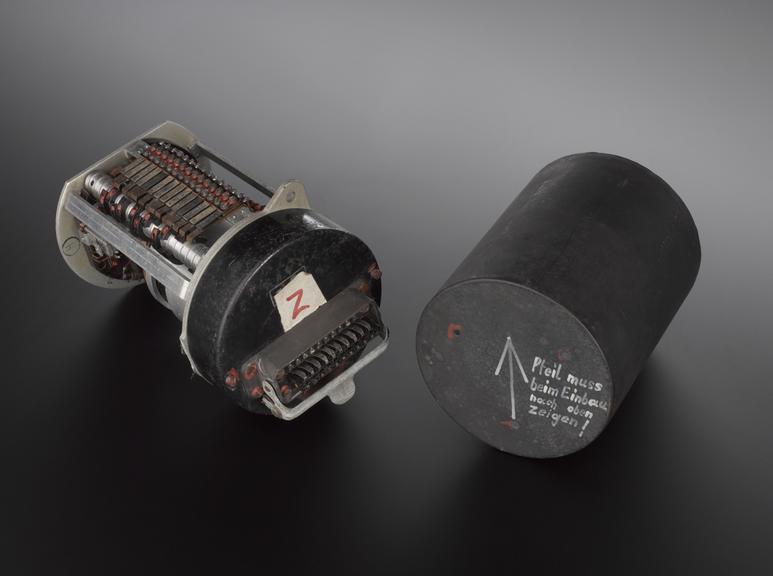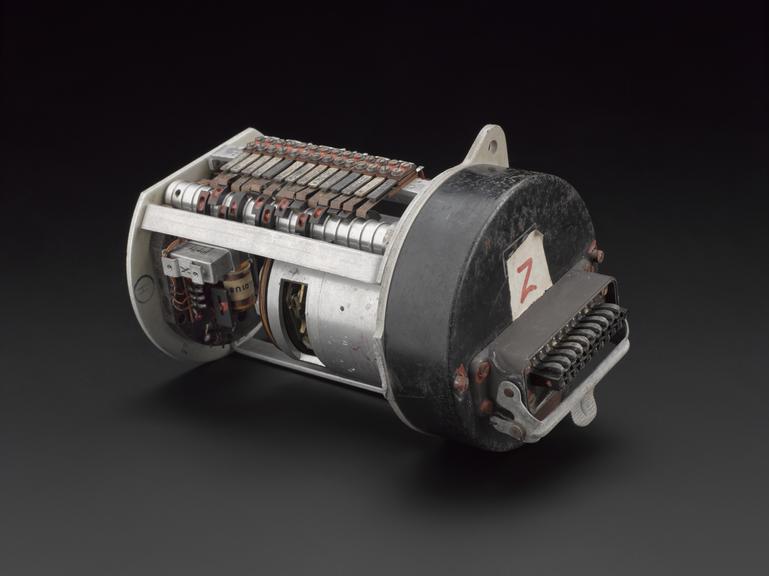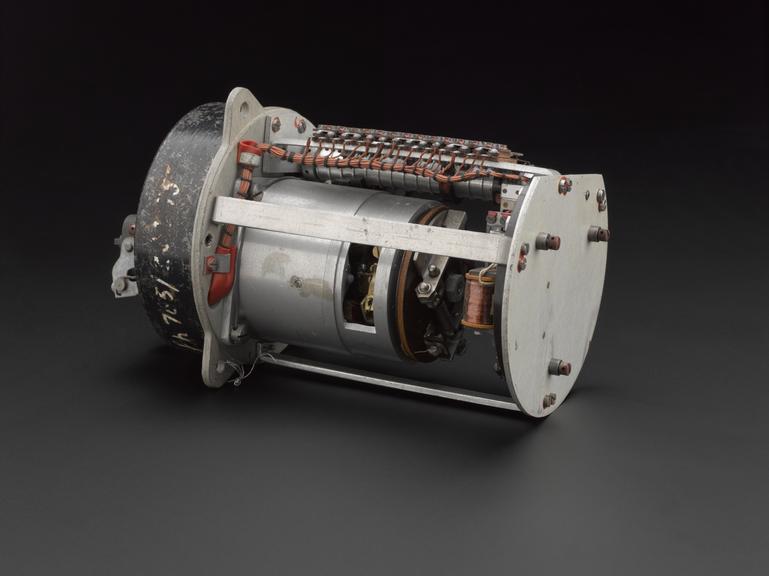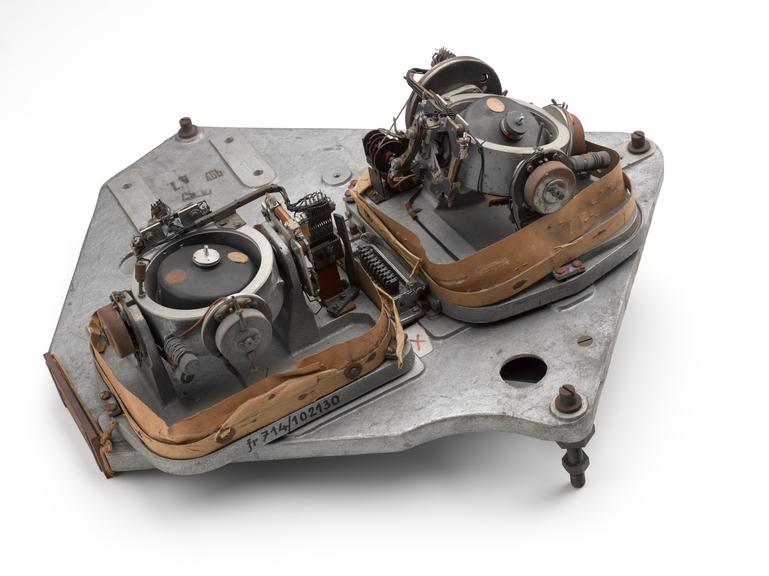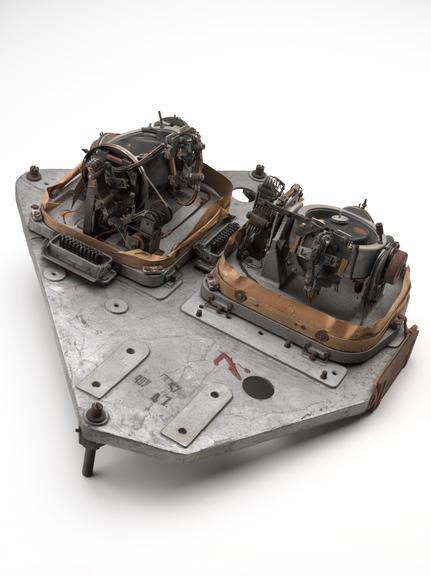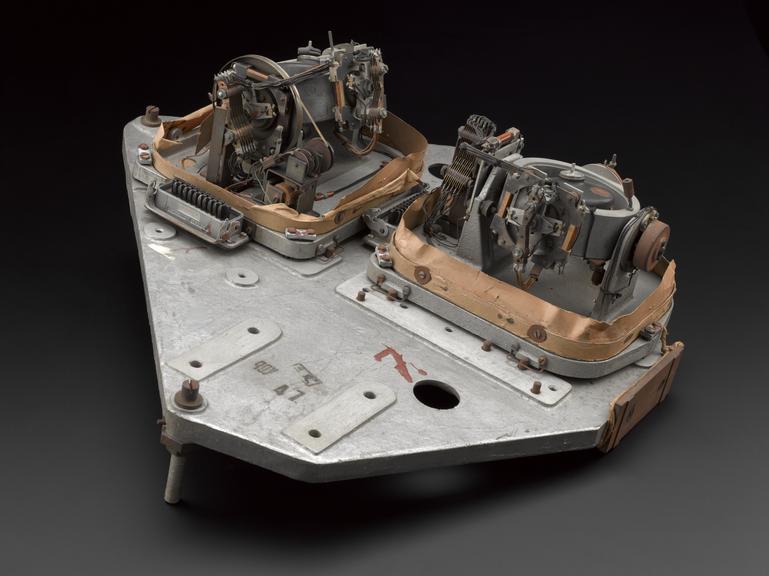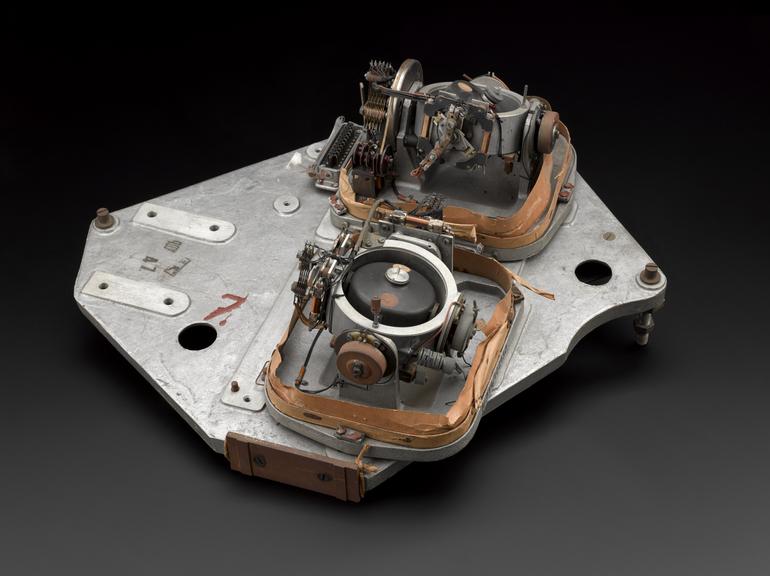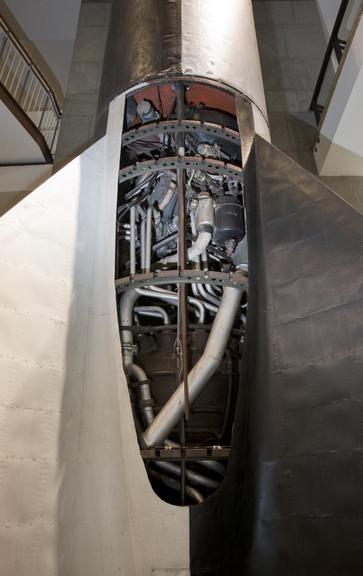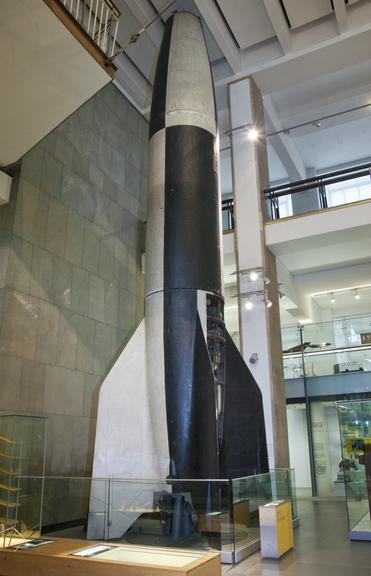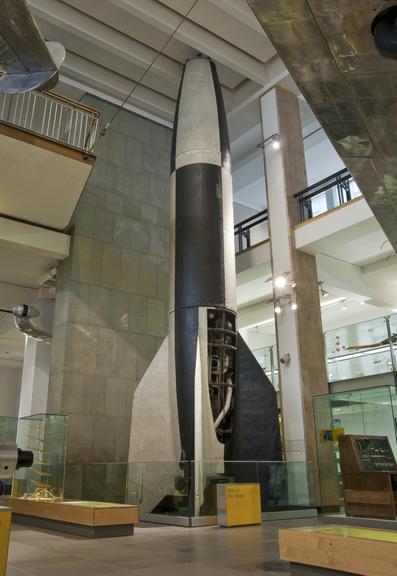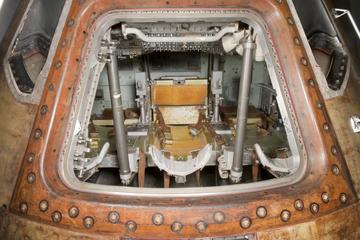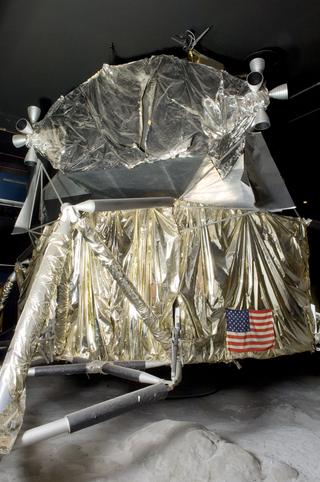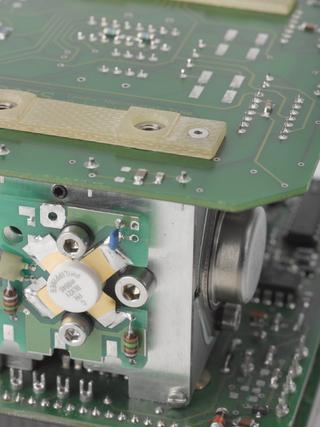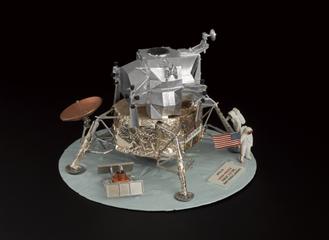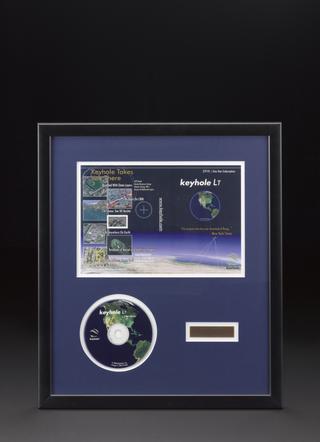V2 Rocket, A4 missile, with handling ring, unsigned, Germany, 1945
The missile age began when the first V2 fell on London on 8 September 1944. Over the next six months some 1,100 V2 missiles hit England killing 2,700 people, before the launching areas in northern Europe were over-run by the Allied armies. The Belgian city of Antwerp was also subjected to a heavy bombardment.
The V2 had its roots in the enthusiastic amateur German rocket societies which nurtured emerging specialists such as Wernher von Braun. However, from 1932 the rocket movement was increasingly taken over by the German army which began building the Pennemünde research station on the Baltic coast in 1936.
The V2 was extremely expensive to develop and to build. The warhead carried 1,000 kg (2,204 lb) of the high explosive amatol. It compared badly in economic terms, with a conventional bomber such as the Lancaster that could carry seven tons of bombs on repeated missions. Hitler's fascination with 'wonder weapons' secured its development.
Although the V2 was strategically insignificant during the Second World War it led to enormous changes in the world. The Saturn rockets, which first took two men to the moon in 1969, were the direct descendants of the V2 and were engineered by Wernher von Braun and many members to the same rocket team. V2 technology also led to the nuclear-armed intercontinental ballistic missiles (ICBMs) developed by the USA and Russia from the late 1950s. These missiles have changed our view of the world, and of war, forever.























